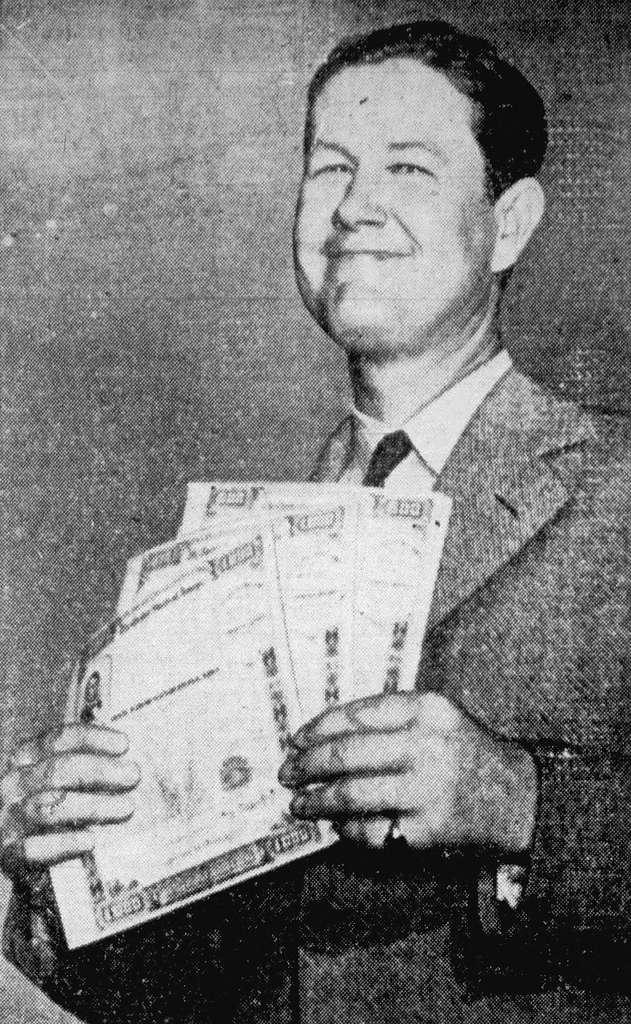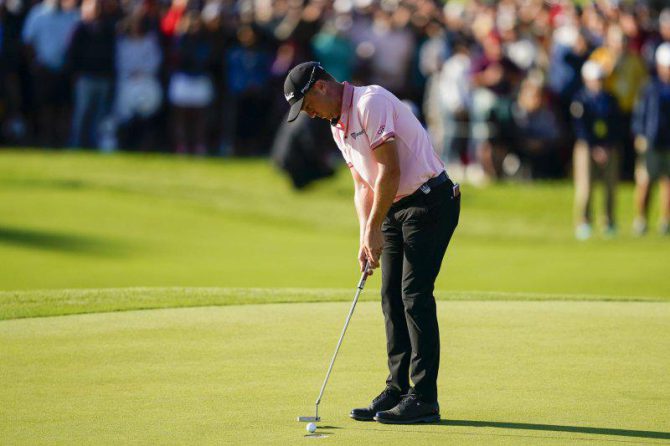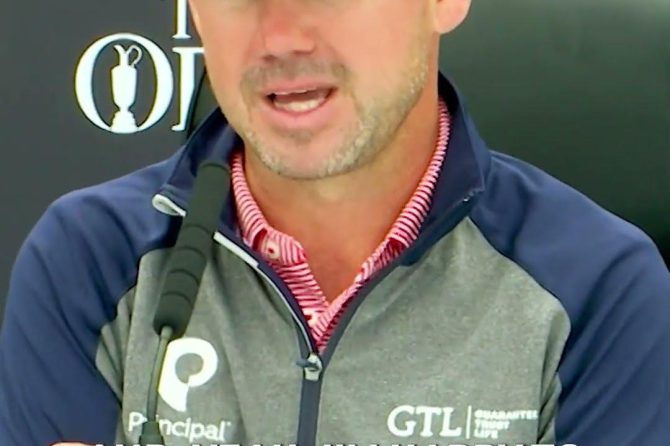This article provides a comprehensive biomechanical analysis of the legendary Byron Nelson’s golf swing, offering insights into its key elements and biokinetic principles. Through an examination of Nelson’s physical attributes, swing kinematics, and kinetic sequencing, this guide aims to elucidate the mechanics underlying his exceptional accuracy, power, and fluidity. By dissecting the various phases of his swing, from the setup to the follow-through, we seek to establish a foundation for understanding the biomechanics of the golf swing. Moreover, the analysis will be complemented by an instructional guide that translates these biomechanical principles into practical techniques, enabling golfers of all levels to enhance the efficacy of their own swings.
Biomechanical Foundations of the Byron Nelson Golf Swing
The Byron Nelson golf swing is renowned for its rhythm, fluidity, and consistent accuracy. Biomechanical analysis reveals an intricate interplay of muscle activations, joint movements, and kinematic sequences that underpin this legendary swing.
Address Position
Nelson’s address position is characterized by a narrow stance (shoulder-width apart), slight knee flex, and a relatively flat back angle. His feet are positioned parallel to each other, with his hands gripping the club in a neutral position. This alignment promotes a balanced and stable base from which to initiate the downswing.
Backswing
As Nelson initiates the backswing, his hips rotate in unison with his shoulders, maintaining the sequential timing between the two body segments. His left arm remains relatively straight, with minimal elbow flexion, while his right arm extends and internally rotates. This combination of movements creates a wide arc and generates significant clubhead speed.
Key Kinematic and Kinetic Characteristics
Kinematic Characteristics
The Byron Nelson golf swing is characterized by several key kinematic characteristics. These include:
- A shallow backswing. Nelson’s backswing is relatively flat, with the clubshaft remaining close to the ground. This helps to generate power and control.
- A long downswing. Nelson’s downswing is relatively long, allowing him to generate a lot of speed and momentum.
- A flat left wrist at impact. Nelson’s left wrist is flat at impact, which helps to promote a square clubface and a straight shot.
Kinetic Characteristics
The Byron Nelson golf swing is also characterized by several key kinetic characteristics. These include:
- A high clubhead speed. Nelson’s clubhead speed is relatively high, which helps him to generate a lot of distance.
- A positive clubhead angle of attack. Nelson’s clubhead angle of attack is positive, meaning that the clubhead is moving downward when it strikes the ball. This helps to generate backspin and lift the ball into the air.
- A high ball flight. Nelson’s ball flight is relatively high, which helps him to carry the ball over obstacles and land on the green.
Kinematic and Kinetic Characteristics Comparison Table
| Kinematic Characteristic | Kinetic Characteristic |
|---|---|
| Shallow backswing | High clubhead speed |
| Long downswing | Positive clubhead angle of attack |
| Flat left wrist at impact | High ball flight |
Instructional Guide to the Nelsonian Swing Technique
The Nelsonian swing was characterized by its fluid rhythm, powerful release, and consistent accuracy. To master this technique, follow these detailed instructions:
- **Address and Grip:** Stand with feet shoulder-width apart, hips turned slightly toward the target. Grip the club with the left hand below and the right hand above, forming an “interlocking” grip. The left elbow should be slightly bent.
- **Backswing:** Initiate the backswing by rotating the hips and shoulders back, keeping the left arm relatively straight. The clubhead should draw a shallow arc parallel to the ground, with the clubface remaining square to the target. The hands should not extend beyond the waist and elbows should not flare away from the body.
- **Downswing and Impact:** As the backswing reaches its apex, initiate the downswing by rotating the hips and shoulders forward. Lower the club along the same arc as the backswing, keeping the hands level. At impact, the club should strike the ball with a descending blow, generating power and a piercing trajectory. Follow through by extending the arms and flexing the wrists, creating an arc that drives the clubhead up and into a balanced finish.
Additional Tips:
To enhance the execution of the Nelsonian swing, consider the following tips:
- Body Rotation: Maintain a consistent body rotation throughout the swing, with the shoulders and hips rotating in synchrony.
- Head Position: Keep the head steady and focused on the ball, ensuring proper alignment during the swing.
- Tempo and Rhythm: Develop a smooth and fluid tempo, allowing the swing to flow naturally and without hesitation.
Table Summary of Key Swing Positions:
| Swing Position | Key Characteristics |
|---|---|
| Address | Feet shoulder-width apart, hips turned slightly toward target, “interlocking” grip, left elbow slightly bent. |
| Backswing Top | Hips and shoulders rotated back, left arm relatively straight, clubhead drawing shallow arc parallel to ground. |
| Impact | Hands level, club striking ball with descending blow, generating power and piercing trajectory. |
| Follow-Through | Arms extended, wrists flexed, clubhead driven up and into balanced finish. |
Advanced Strategies for Incorporating Nelsons Principles
Expand Foot and Shoulder Width:
In the takeaway, widen your stance while keeping your feet shoulder-width apart. Exaggerate the shoulder turn past parallel to create torque and promote a wider downswing arc. This increased leverage improves clubhead speed and distance.
Reverse Shoulder Rotation:
After impact, reverse your shoulder rotation beyond neutral. This unique move pulls your arms across your body, accelerating the release and producing more lag. The resulting whip-like motion imparts maximum spin and control on approach shots.
Create Clubhead Drop:
Incorporate a slight clubhead drop during the downswing to shift the mass downward. This promotes a more forceful strike and reduces the chance of a topping or a thin shot. Control the downward force to avoid excessive loss of trajectory.
| Technique | Benefit |
|---|---|
| Foot and Shoulder Width | Increased torque and leverage |
| Reverse Shoulder Rotation | Whip-like release and lag |
| Clubhead Drop | Forceful strike, reduced topping and thin shots |
Practical Applications and Exercise Progressions
The biomechanical principles outlined in this analysis provide a foundation for practical swing improvements. Focus on key fundamentals such as maintaining spine angle, promoting shoulder external rotation, and ensuring proper weight distribution to enhance swing dynamics. Regular practice is essential to ingrain these principles into your swing, and incorporating specific exercises can help accelerate progress.
Exercise Progressions for Improved Biomechanics
- Posterior Chain Strengthening: Exercises like squats, lunges, and deadlifts strengthen the muscles supporting the spine and hips, enhancing stability and power generation.
- Shoulder External Rotation: Incorporate exercises like banded external rotations, dumbbell flyes, and cable crossovers to improve shoulder mobility and increase external rotation capacity.
- Dynamic Stretching and Proprioception: Integrate dynamic stretching drills and exercises that focus on balance and coordination to improve swing fluidity and body awareness.
Personalized Swing Analysis and Coaching
For personalized guidance and tailored exercise recommendations, consider seeking a qualified golf coach or swing analyst. They can assess your swing mechanics, identify areas for improvement, and develop a personalized plan to optimize your performance based on these principles.
this comprehensive biomechanical analysis of Byron Nelson’s golf swing provides valuable insights into the mechanics and principles that underlay his renowned swing. The meticulous examination of key parameters, such as club delivery, spine angle, and hand path, offers a thorough understanding of the techniques that contributed to Nelson’s exceptional success. This instructional guide empowers golfers of varying skill levels to incorporate elements of Nelson’s swing into their own game, potentially enhancing their performance and achieving more consistent and accurate shots. The application of contemporary biomechanical knowledge to a legendary golf swing provides a unique and valuable resource for golfers, coaches, and researchers alike.





